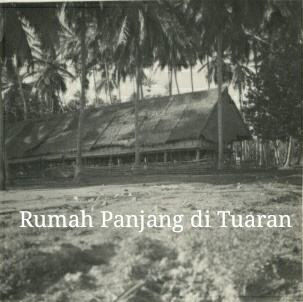LEGEND AND ORIGINS OF THE KOROLI TRIBE, LABUK, SANDAKAN
- Marwan Bin Musa
- Feb 26
- 4 min read

The legend of the Koroli Tribe has been passed down orally from generation to generation, ensuring that their descendants never forget their origins. Now, it is time for us to share this story with our children and grandchildren as a remembrance, a lesson, and a reflection on the past.
According to ancestral legends, hundreds of years ago, as far as memory serves, the Koroli Tribe descended from "Tinggoron," a legendary warrior and warlord known for his extraordinary bravery and reputation during his time.
Tinggoron was one of seven legendary warrior siblings, alongside Longguwai, Runsud, Lintobon, Tomui, Turumpok, and another whose name has been forgotten.
One day, these warrior siblings decided to part ways, each setting out with their families and followers in search of new lands and livelihoods.
Today, we recount the legend of the descendants of "Warrior Tinggoron," the founder of the Koroli Tribe, who led his people to Telupid. Over time, his lineage expanded, forming various sub-tribes in the Labuk region. From Tinggoron’s descendants emerged the Bayok, Dusun Klias, Putih, Tindakon, Turawid, and Koroli tribes. The Koroli Tribe eventually branched into eight sub-groups: Koroli, Kotoring, Kiwulu, Sogo, Sungangon, Dalamson, Tampulung, and Sogilitan.
The Great Flood and the Survival of the Koroli Ancestors
Long ago, a peculiar man from the lineage of Warrior Tinggoron lived in solitude near the Labuk settlement. One night, he had a strange yet vivid dream where a great flood submerged the entire village, leaving only the highest mountain peaks above water. In his dream, an elderly man dressed in white appeared and instructed him to build a longhouse on high ground. The old man warned that within a year, a catastrophic flood would occur, and only those who moved to the new longhouse would survive. The old man promised to return before the flood.
Upon waking, the man urgently warned the villagers about the impending disaster and pleaded with them to help him build the longhouse. However, they laughed at him, dismissing him as a madman.
With no one willing to believe him, he ascended the mountains alone and began constructing a massive longhouse, determined to save as many lives as possible. The mountainous region had an abundance of large trees, which he used for building materials. Every day, from dawn to dusk, he tirelessly cut down trees, erected support pillars, and carefully assembled the structure. Over the course of a year, the longhouse was completed with walls, flooring, and a sturdy roof.
One night, the elderly man in white reappeared in his dream, warning that the flood would arrive in three days. He instructed the man to return to the village and urge the people once more to relocate immediately.
In desperation, the man rushed back to the village, pleading with them to move to the new longhouse before it was too late. Once again, the villagers mocked him, dismissing his warnings as the ramblings of a lunatic.
Only his cousin, a young woman, chose to believe him and followed him to the mountains.
As foretold, after three days, the rain began to fall. At first, the raindrops were the size of a fingertip, but soon they grew larger and heavier. The downpour continued relentlessly for days, submerging the village. Crops, livestock, and homes were swept away. The entire village perished in the flood. The water levels rose so high that even the nearby hills disappeared beneath the waves. Finally, the rain ceased as the floodwaters reached the base of the newly built longhouse.
During the flood, many wild animals, including "Kalasiau" (wild buffalo), deer, bears, panthers, and rhinoceroses, sought refuge near the longhouse. Once the waters receded, the animals returned to their habitats, leaving only the man and his cousin behind.
Since they were the only human survivors, the two eventually married and bore seven sons and seven daughters. When they grew up, they married among themselves, forming eight family units, including their parents. These eight family units swore never to intermarry and instead established their own sub-tribes. This marked the beginning of the Koroli Tribe.
The eight branches of the Koroli Tribe were named Kotoring, Kiwulu, Sogo, Sunggangon, Dalamson, Tumpulung, and Sogilitan.
Historical Accounts and Migration Patterns
In 1886, an explorer named D.D. Daly recorded in his diary that during his expedition to Kinabatangan, four tribes—Longom, Puteh, Kitaring, and Tampias—had united in battle against their enemies.
The Koroli Tribe is believed to have originated from the Tompios settlement. Some of them later migrated to Kiubak along the Ensuan River, where they established the Ensuan settlement. Various sub-tribes, such as Koroli, Sogo, and Kiwulu, settled in Ensuan, while some Dalamson families were also present. The Sogilitan sub-tribe could be found in the villages of Melapi, Kopuron, Mangkadaik, and Lumou. The Sungangon sub-tribe settled in Barayon, while many Tampulung families lived along the Labuk River, from Poginatan to Telupid and downstream.
Sources:
Diary of D.D. Daly (1886)
PS Shim (2007)
Edited by:
Kumis Kumis







Comments